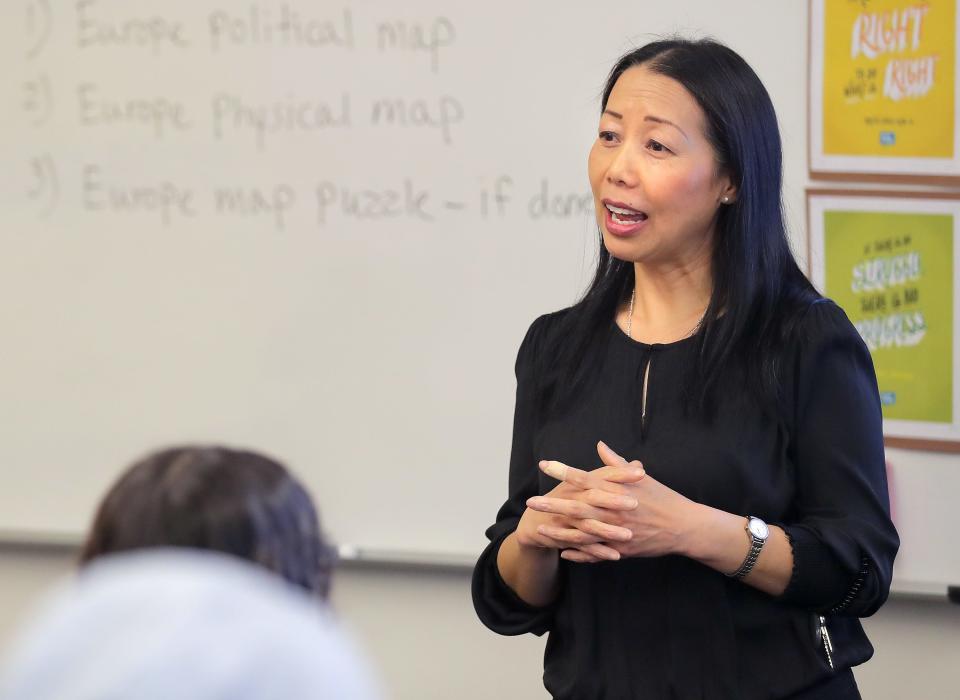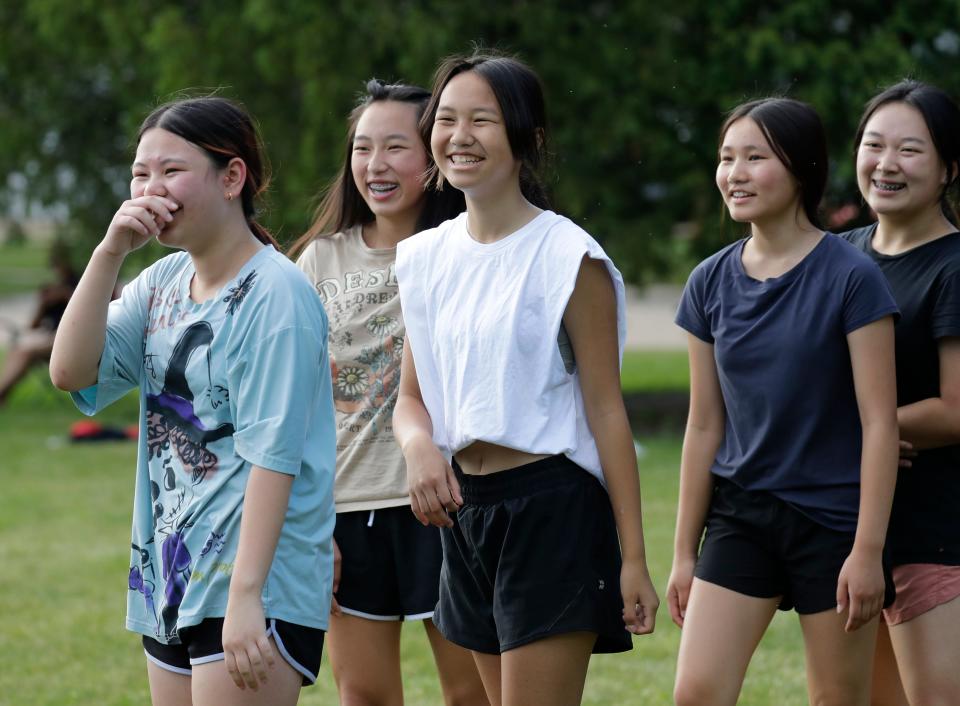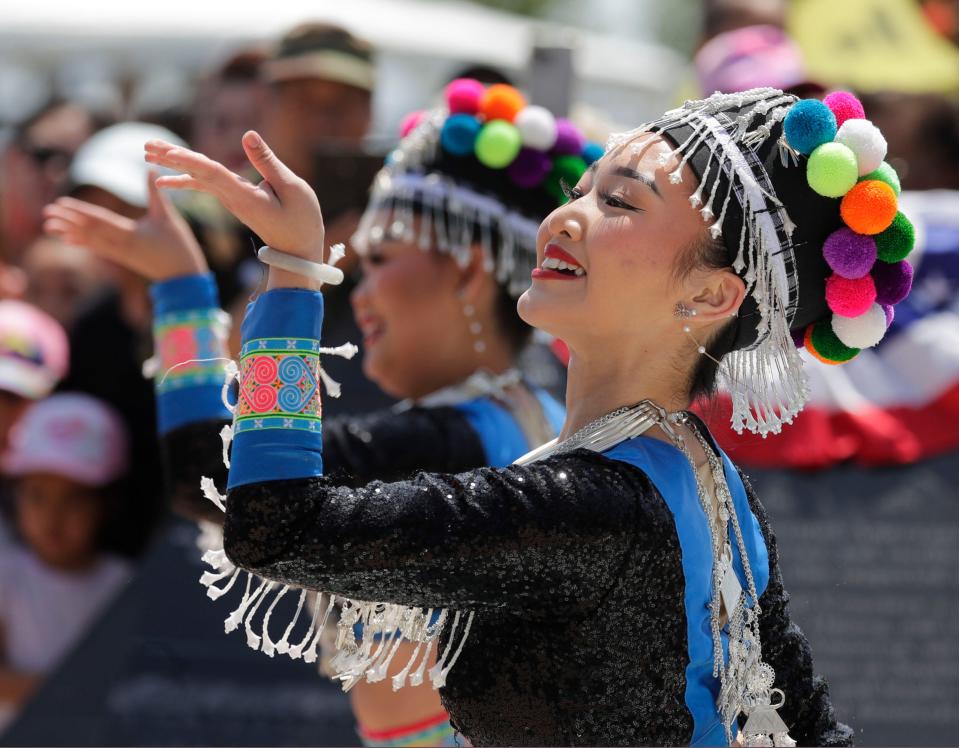Appleton schools ahead of the curve teaching Hmong American history in middle school
APPLETON - A bipartisan bill requiring Wisconsin public schools to teach Hmong American and Asian American history was signed into law April 4. However, schools at the local level have been including this instruction for years.
The new law, 2023 Wisconsin Act 266, adds Hmong American and Asian American history to statute 118.01(2)(c)8, which also includes direction for school boards to teach the history of Native Americans, Black Americans and Hispanic Americans.
The Wisconsin Department of Public Instruction considers this kind of instruction "a local control matter," according to DPI communications officer Chris Bucher. However, he added, DPI is working on an action plan for the new law and plans to include input from Hmong American and Asian American community members.
In the meantime, the Appleton Area School District has worked to include Asian American, especially Hmong American, history and culture in seventh-grade geography since 2018. Some teachers' efforts go back nearly two decades.
More: Evers signs bill requiring schools to teach histories of Asian and Hmong Americans
Hmong American history instruction in Appleton started with individual teachers' efforts

Chia Lee has taught seventh-grade geography at Wilson Middle School for 15 years. Starting in the 2000s, long before AASD made Hmong American history part of its curriculum, Lee had taken two or three days from her Southeast Asia unit to teach her students about the history of Hmong Americans in Appleton. She also told her students about her personal experience as a Hmong refugee, coming to Appleton at age 15 with little formal education.
She saw including that instruction as part of her duty as an educator, especially to help her students understand why Hmong Americans lived in their community. She saw the need for teaching about Hmong people, she said, when her students "asked me if I'm Chinese."
Today, her instruction includes excerpts from her book, "The Illiterate Daughter," which is based on her lived experiences as a Hmong refugee. The book, published by Scarsdale Publishing under the pseudonym Chia Gounza Vang, is available on Amazon.
She also has her students do an art project that teaches the symbols from the Hmong embroidery art of paj ntaub, translated as "flower cloth" or "story cloth."
Other Appleton-area middle school teachers, like Lee's fellow Wilson seventh-grade geography teacher Chloe Reierson and retired teachers Sarah Pope and John Wuebben, also incorporated Hmong history and culture into their instruction long before AASD did it districtwide, according to Einstein middle-school teacher Jonathon Zabel.
These independent efforts "and the expertise of these wonderful teachers" played a part in putting together a unit on Hmong American history and culture to be used across the district, Zabel said.
Curriculum meant to promote understanding of Hmong American neighbors and residents
The districtwide Hmong American unit began in 2018 with a group that included Zabel, Reierson, Pope, Roxanne Parker and Kathy Ennis. All are current or former AASD middle school geography teachers; they recognized the need for a districtwide plan to teach local students about Hmong American people and their history in the Valley.
To Zabel, Hmong American history "is part of our local history" — but a history that often goes unlearned until Appleton-area residents are adults. Reierson said she experienced the same thing as a student with Hmong friends and classmates, not knowing or understanding their experiences until she grew up.
Additionally, this group of teachers wanted to dispel "misleading stereotypes" about Hmong people "shared out of ignorance," Reierson said.
The unit started with a curriculum rewrite in 2018, Parker said, and took about two years to completely implement. The group of geography teachers drew upon independent efforts to teach Hmong American history, like Lee's classes, and their own expertise as teachers to create a two- to three-week unit in seventh-grade geography for the entire district.

The curriculum includes books like "Tangled Threads: A Hmong Girl's Story" by Pegi Deitz Shea, "The Hmong in America: We Sought Refuge Here," by former AASD teachers Peter and Connie Roop, and the PBS documentary "Being Hmong Means Being Free."
Seventh-grade geography is when students learn about Southeast Asia. Since Hmong Americans in Appleton typically come from Vietnam, Laos and Thailand, learning about those countries is an opportunity to teach non-Hmong students about their Hmong neighbors' history and culture.
"We wanted them to understand that experience and how they came to settle in Appleton," Ennis said.
That includes telling the story of the "Secret War," when Hmong soldiers were covertly recruited and trained by the CIA to assist Americans in the Vietnam War and the Laotian Civil War. When the U.S. withdrew from the region, Hmong people were persecuted and eventually resettled in several countries, including the United States and especially in California, Minnesota and Wisconsin.
Lee said the unit is also an opportunity to teach Hmong students about their own history. Since many first-generation Hmong refugees experienced significant trauma in refugee camps and on their journey to the U.S., she said they sometimes don't tell their stories to their descendants.
Lee said she communicates with Hmong American families before teaching the unit, letting them know their students may come home with questions about their own family history. Lee said she's found Hmong students learning about their history in school "sparks conversations" at home, which can be "a very valuable and powerful" experience for them and their families.

Teachers see unit as 'eye-opening' and a chance for Hmong students to take pride in their heritage
Since the unit was fully implemented in 2020, the team behind the AASD Hmong American unit has had a chance to see its impact.
Parker said she believes they have accomplished their goals with the unit, while Ennis said she's seen parents want this kind of instruction for their kids.
"Our work is starting to be heard about in the local community," Ennis said.
More recently, the unit has culminated in a presentation and demonstrations about Hmong culture involving all seventh-grade students. The last session, which was put together by AASD's middle school DEI coordinator, William Xiong, was held in November. The event included breakout sessions about Hmong dance, music, art and religion.
For non-Hmong students, getting hands-on experience with Hmong culture was "eye-opening," as they saw "the things they learned in class coming to life," Zabel said.
Reierson said she's seen Hmong students benefit from "taking ownership of their culture and history and seeing non-Hmong students enjoying it and celebrating it."

She recalled one Hmong student who was nervous about wearing traditional Hmong dress to school that day.
"She wondered if the other kids would make fun of her," she said. But, Reierson added, "by the end of the day, she was beaming."
Now that instruction on Hmong and Asian American history is a requirement at the state level, Lee takes comfort in knowing future students "will at least understand why Hmong people exist in Appleton," she said.
Lee said she is "proud" to be part of a district that makes teaching all aspects of a community a priority. That's especially true, she said, "when non-Hmong teachers recognize the importance of creating cultural awareness in schools and celebrate the history and culture of local people in the community."
"It was the dedicated teachers in Appleton who worked hard to make (the unit) happen," she added.
More: Living in Wisconsin: 'Hmong people are truly American, if not more American than most Americans'
More: How did Hmong people find their way to Wisconsin? The answer has roots in America's Secret War
Rebecca Loroff is a K-12 education reporter for the USA TODAY NETWORK-Wisconsin. She welcomes story tips and feedback. Contact her at 920-907-7801 or rloroff@gannett.com. Follow her on X (formerly Twitter) at @RebeccaLoroff.
This article originally appeared on Appleton Post-Crescent: Act 266: Hmong American history and culture taught in Appleton since 2018

